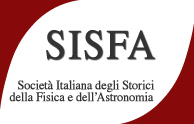Speaker
Description
After spending twenty years in Bologna developing first-rate research in collaboration with the Jesuit astronomers of the College of Santa Lucia, Gian Domenico Cassini arrived in Paris in 1669 at the invitation of Colbert, Louis XIV's minister, to develop research to determine the longitudes of places and to define the first topographic map of France. Of the scientific missions organized by Cassini at the Paris Observatory, one of the most famous is undoubtedly that of Cayenne in 1672-73, when Jean Richer's observations of the parallax of Mars, then at perigee, together with those by Cassini in Paris, led to the first reliable measurement of the Earth-Sun distance. The presentation deals with the figure of Cassini, the influences exerted by the Bolognese scientific environment in orienting him towards certain areas of study, and finally the methods used in Cayenne and Paris to estimate the parallax of Mars and the Earth-Sun distance. What emerges is a complex picture in which evaluations of celestial distances, astronomical observations carried out in different places and time-measuring techniques are intimately connected with each other and linked to the knowledge in the field of geography and geodesy available at the time.

